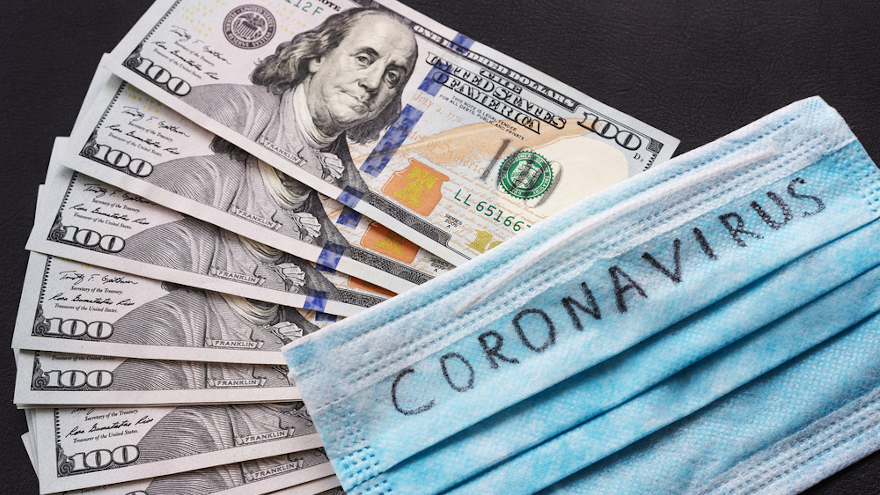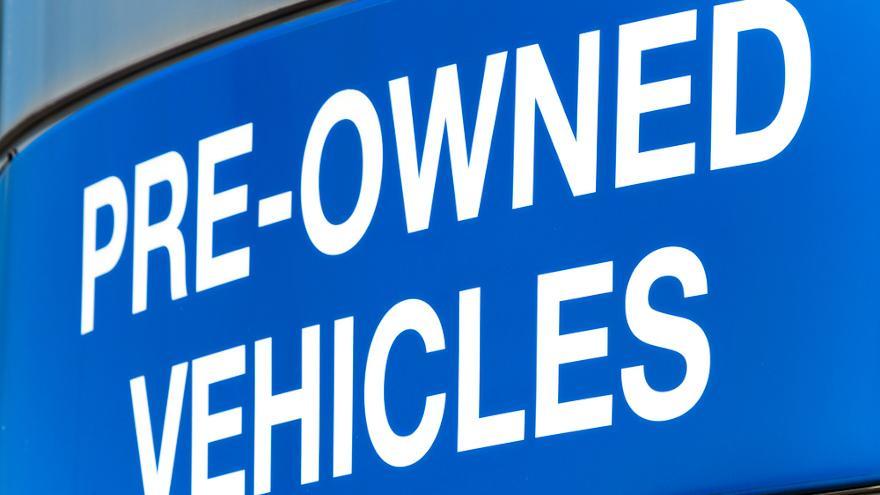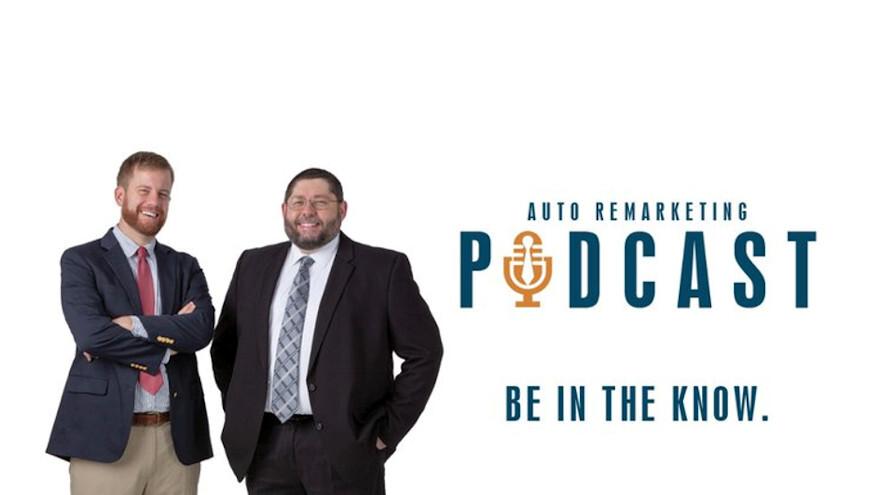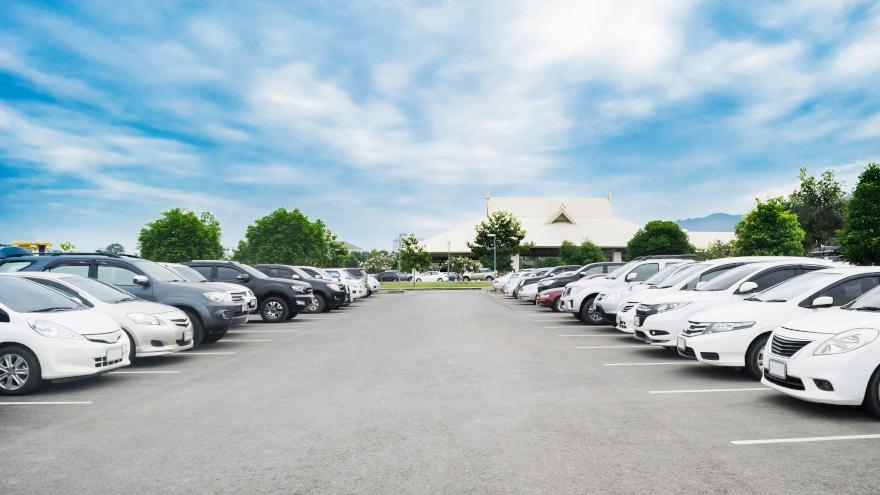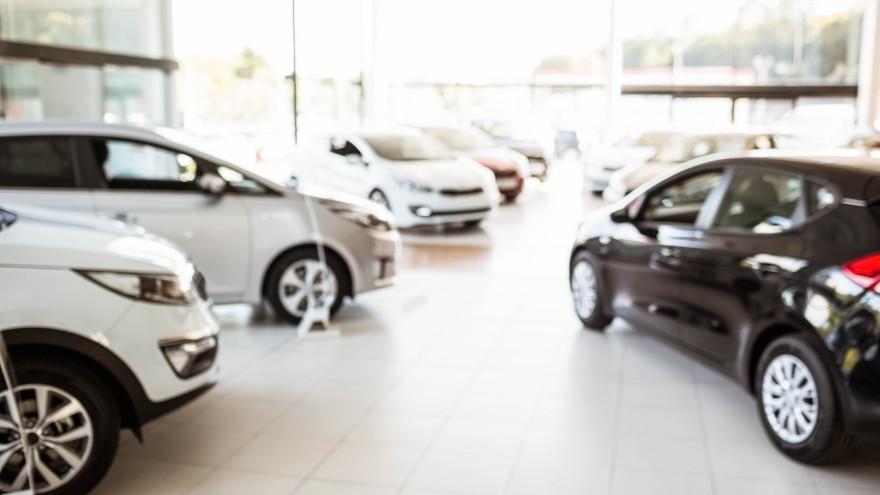A little more than a week remains for your dealership to meet its monthly sales targets or your finance company to push toward portfolio growth objectives for July.
Currently, deliveries are being completed and contracts are being bought at decent clips, especially considering how much the coronavirus pandemic has thrown grit into the industry gears since March.
But experts are cautious about the second half of the year in a marketplace that as of June 23 had roughly 7.5% of all outstanding auto finance contracts receiving some sort of accommodation designed to assist financially troubled consumers, according to data from Equifax.
Comerica Bank chief economist Robert Dye put it this way in a recent Economic Alert: "Even though U.S data improved through June, there is significant risk of weaker performance in the second half of this year depending on the path of the coronavirus pandemic.”
Some individuals are beginning the second half of this unforgettable year trying to recapture their financial footing. Along with the modifications to auto financing, Equifax reported that 8.7% of mortgages, 6% of home equity loans and 2.7% of credit cards have been adjusted by providers.
Further, Equifax pointed out that less than 1% of outstanding auto-finance contracts had any such adjustments early in 2020 before the pandemic-triggered economic fallout arrived.
At least part of the reason for all of those modifications is job losses. According to data from the U.S. Department of Labor, there have been 18 consecutive weeks of initial unemployment insurance claims above 1 million, including spikes of 6.9 million on March 28 and 6.6 million on April 4.
With the number of COVID-19 cases still climbing nationally at a “dramatic” rate, S&P Global Economics acknowledged that uncertainty for the U.S. economy is elevated again. Analysts said high-frequency real-time economic data — which first hinted at a start of normalization in May — now suggests that the recovery may be losing steam.
“While it may be premature to sound the alarm for an even worse outcome, the recovery is facing increased challenges with the spread of COVID-19. This is all while government stimulus measures are set to expire,” S&P Global Economics experts said on Thursday.
The firm now thinks the probability of an even worse economic outcome is 30% to 35%, up from 25% to 30%.
“Although our base case is for a gradual recovery through next year, the surge in COVID-19 and hospitalizations has raised concerns that a more likely scenario is that the COVID-19 recession has not bottomed out,” S&P Global Economics experts added.
Federal lawmakers returned to Capitol Hill this week to craft what many experts expect to be another round of assistance. They certainly appear to be needed since unemployment insurance enhanced by the federal government through the CARES Act is set to expire this month. There’s little doubt that the extra $600 per week individuals are collecting via unemployment insurance might have kept some retail installment contracts current or gave some individuals the gumption and resources to make a purchase.
U.S. Senate Majority Leader Mitch McConnell appears to want more assistance based on what he said Tuesday when appearing on the chamber floor.
“The ingenuity and spirit of America’s small businesses is impossible to overstate. But they still face a tough road. With the majority of businesses expected to exhaust their initial Paycheck Protection Funding this summer, we’ll also be proposing a targeted second round of the PPP with a special eye toward hard-hit businesses,” McConnell said.
“And speaking of building on what worked in the CARES Act, we want another round of direct payments to help American families keep driving our national comeback,” he continued.
S&P Global Economics indicated the U.S. economy faces a “fiscal cliff” at the end of the month since many CARES Act stimulus programs — including those extended unemployment benefits for millions of workers — are set to expire.
“We believe that if they are allowed to lapse, the impact would likely be severe with lasting scars,” the firm said. “Indeed, according to testimony (on Friday) by former Federal Reserve chairs Janet Yellen and Ben Bernanke, the U.S. could face deep, permanent economic damage without more than $1 trillion in further stimulus.”
S&P Global Economics noted that one recent proposal had lawmakers cutting those individual weekly unemployment benefits to $400. Assuming about 20 million beneficiaries, that firm calculated that would mean a $36 billion income decline for August and September.
Holding all other factors constant and assuming the lost money would be spent, S&P Global Economics calculated that third-quarter growth would be 18% (annualized) instead of 22%, which was its forecast compiled in June.
“While not factored into our analysis, this lost spending would mean further job losses, making the overall impact on the economy even worse. And with federal moratoriums on government-backed loans and on tenant evictions from FHA-secured properties also set to expire, the impact would only snowball,” S&P Global Economics experts said.
And many dealerships, finance companies and other automotive service providers benefitted from the Paycheck Protection Program, which is also set to expire; “leaving many small businesses struggling to survive a second round of business closures,” according to S&P Global Economics.
Experts went on to say, “This is happening while state and local government budgets are severely depleted, leaving their own policy hands tied in the midst of the new COVID-19 assault.
“Federal government actions to both contain the virus and extend stimulus programs until private demand has sufficiently recovered are key in avoiding another downturn. But the clock is ticking,” S&P Global Economics concluded.
In a quarter where the retailer notched an earnings record, Lithia Motors also reported strong results in its used-car operations as it released second-quarter fiscal results on Wednesday.
Offering some overall commentary on the quarter, Lithia president and chief executive Bryan DeBoer said in a news release: “The strong sequential improvements throughout the quarter, coupled with our stores' responsiveness to the current environment, led us to the highest quarterly adjusted earnings per share in our company's history.
“This record performance illustrates the massive opportunity that exists within our $2 trillion industry that we are unlocking through continued growth and the activation of our ecommerce digital home solutions,” DeBoer said.
Getting into some used-car specifics, Lithia generated $922.2 million in used retail revenue in Q2, up 3.8% year-over-over. For the first half of 2020, used retail revenue reached nearly $1.8 billion, a 4.7% gain.
Used-vehicle wholesale revenue was down 37.2% at $51.3 million in Q2, while first half wholesale revenue fell 25.8% at $118 million.
Turning to gross margins, Lithia's used-vehicle retail gross margins in the second quarter were at 10.7%, up from 10.5% a year ago.
First-half retail gross margins in used retail were 10.5%, up from 10.4%.
Lithia retailed 43,505 used vehicles during the quarter, a 1.5% year-over-year increase. The group retailed 86,136 used vehicles in the first half for a 3.1% gain.
Average selling prices on used retail vehicles for Lithia was up 2.3% at $21,196 for Q2. For the first half, it was up 1.5% at $20,857.
Lithia pulled in average gross profit per unit of $2,259 for used retail sales in Q2, a 3.9% gain. Year-to-date, that figure was $2,185, a 2.7% hike.
Retail used vehicles comprised 33.4% of the revenue mix at Lithia in Q2, up from 27.6% a year ago.
Through six months, used retail has a 32.3% share of revenue mix, up from 28.3% in the first half of 2019.
For used wholesale, the revenue mix shares for the quarter and half were 1.9% (down from 2.5%) and 2.1% (down from 2.6%), respectively.
Next up, used retail had a 21.2% share of gross profit mix for Lithia during the quarter, up from 18.9% a year ago. Through six months, that share is at 20.3%, compared to 18.8% in the year-ago period.
Used-vehicle wholesale share of gross profit mix was 0.5% for the quarter (up from 0.4%) and 0.3% year-to-date (no change).
Elsewhere among the publicly traded retailers, Penske Automotive Group shared an overall operational update last week, including some details on how its used-car sales have progressed.
All of the group’s retail dealerships in the U.S. are open, the retailer said, indicating that they saw a month-over-month uptick in new- and used-vehicle unit sales for June.
As for Penske’s U.K. dealerships, those closed on March 24 per government mandates, but most showrooms opened back up on June 1, with parts and service having re-opened in mid-May.
“Since re-opening, sales of new and used vehicles, vehicle grosses and service operations have been strong, with new vehicle unit sales for our business significantly outperforming the overall market in June,” the company said of its U.K. operations in a news release.
Penske also operates several used-vehicle supercenters in the U.S. and U.K., and those opened back up last month.
“Sales of used units were strong with combined U.S. and U.K. operations generating profit from operations that more than doubled when compared to June of last year,” the company said in the update.
In this episode of the Auto Remarketing Podcast, Joe Vitale, who is principal and global automotive sector leader at Deloitte Consulting, joins the show to talk with Auto Remarketing senior editor Joe Overby about Deloitte's report on "Restarting the Stalled Automotive Sector."
For a recap of the full report, be sure to check out this story from Nick Zulovich earlier this month.
To listen to this episode, click on the link available below, or visit the Auto Remarketing Podcast page.
Download and subscribe to the Auto Remarketing Podcast on iTunes or on Google Play.
United Road recently highlighted the five special initiatives the transportation company is using during the COVID-19 pandemic to help OEMs, dealerships, rental-car companies, auctions and other consignors and wholesalers get vehicles shipped to and from intended destinations.
“United Road is doing what it takes to support our customers, being agile and fluid as customers replenish inventories, buy and sell vehicles, reposition fleets, and haul-away oversized trucks,” United Road president and chief executive officer Mark Anderson said in a news release.
“We’ve expanded capacity and are getting smarter every day in how we operate,” Anderson continued. “We have doubled down on tech-savvy solutions, expanded our carrier partner network and increased capacity by 25% over 2019. Our goal is to make it fast and simple for customers to move vehicles when and where they need them — whether one unit or multi-unit, from standard sized vehicles to oversized trucks.”
Anderson pointed out several ways United Road is looking to get its customer vehicles moving. These initiatives include:
• Financial incentive: Special 10% discount for booking the next three moves is helping dealers transport vehicles and cut expenses
• Technology-enabled solutions that put information including pricing and vehicle tracking in customer hands on their iPhones in real time
• Touch-free delivery
• Expanded customer service hours and resource support
• A new user-friendly United Road website
“Each customer, each vehicle move is unique,” Anderson said. “United Road’s portfolio of companies including Team Drive-Away and Pilot enables us to deliver on a diverse range of customer needs — from single and multi- vehicle and heavy-haul interstate transport to storage and specialty vehicle enclosed moves.
“While operating during the pandemic has been challenging it has brought out the best in our team of professional drivers and carrier partners and customer support professionals. We are grateful for everyone’s service and adaptability,” he went on to say.
United Road shared perspectives from a couple of clients that have taken advantage of these special actions and promotions the transportation company have taken during the pandemic. One came from Mike Lupacchino, who is director of national traffic of Subaru of North America and used United Road needed to move and store new vehicles from railheads and ports.
“I would like to thank United Road for the continued support, not only on storage opportunities, but especially the help at our Lafayette, Ind., manufacturing plant and Elwood, Ill., railroad ramp, as well as the ports and railheads that United Road continued to ship from during these challenging months. United Road has always been a critical partner in Subaru’s success,” Lupacchino said.
John Piatak of Fair offered this assessment about United Road moving its used vehicles: “I have partnered with United Road at two companies — both of which designed and implemented innovative solutions to the challenge of moving cars to customers. As in the past, United Road proved to be a creative and reliable partner with developing delivery solutions that met both the customer and driver's safety needs during the COVID-19 crisis.”
Anderson also emphasized employee well-being and customer safety continue to be paramount at United Road.
The company mentioned safety precautions include digital communication and transactions that can enable customers and car haulers to avoid signatures and sharing devices at time of delivery. Drivers and terminal professionals use masks and sanitation kits and follow appropriate distancing and cleaning procedures.
“United Road is laser-focused on helping our customers get on the road to economic recovery,” Anderson said. “Today’s business climate is fluid and ever changing. More than ever, United Road is driven to deliver.”
For more information, visit https://www.unitedroad.com.
Lagging, but not lost.
That’s how a CarGurus analyst described the car-sales picture in the aftermath of the COVID-19 pandemic, whose impact on car shopper intentions seems to have moderated in recent months.
In April, 79% of shoppers planned on delaying their car purchases, but in June, that figure slowed to 69%, according to the latest COVID-19 Sentiment Study from CarGurus, which included other similar findings.
Not to mention, 70% of the delayers are still conducting vehicle research, according to CarGurus.
“The benchmarked CarGurus COVID-19 Sentiment Study showed us that while 2020 auto sales may be lagging, they are certainly not lost due to the pandemic,” CarGurus director of customer insights Madison Gross said in a news release.
“The study also shows us that COVID-19 has caused vehicle ownership to become more vital to consumers’ everyday lives, often replacing other transportation methods such as ride-sharing or public transit,” Gross said.
Among shoppers who prior to the pandemic had planned on purchasing this year, 8% in April said they would indefinitely delay the purchase, according to CarGurus. Now, just 2% say that.
Here’s one of the more interesting stats.
Consider the consumers who either 1) currently intend on buying a car this year but haven’t done so or 2) have already bought a car this year. Close to a quarter of them (22%) were not even planning to buy this year, prior to COVID-19, CarGurus said.
In terms of urgency levels in making a purchase, 37% of 2020 current prospective buyers said they were “somewhat urgent” to buy, with 28% saying they were “not at all urgent.”
About a quarter (24%) were “a little urgent,” and only 7% were “very urgent” and just 4% were “extremely urgent.”
One of the impacts of stronger used-car retail sales is downward movement in supply, both in terms of retail and wholesale figures.
According to a mid-month update of the Manheim Used Vehicle Value Index, the supply of retail used vehicles was most recently at 34 days (based on a vAuto data-driven, seven-day estimate).
A typical level is 44 days, parent company Cox Automotive said in the analysis.
The most recent reading is even more interesting when you consider the peak of used retail supply was 115 days back in April, according to the Cox data.
On the wholesale side, the most recent seven-day reading of used supply was 24 days, according to the analysis. While that’s still above normal (23), it is down considerably from the April 9 peak, when Cox Automotive said wholesale supply reached 149 days.
In a separate analysis, Black Book also touched on used-car supply.
“Many dealers continue to report a shortage of used inventory in the wholesale marketplace. As a result, from the peak in February, we’ve seen a decline in the number of used retail listings by about 25%,” Black Book said in its weekly COVID-19 Market Updates report.
“The true shortage of the vehicles is probably not as severe as this decline would lead you to believe, as many dealers sell some of their best inventory in the first several days before listing them online,” it added. “Nevertheless, the shortage of used inventory helps keep retail prices elevated even in the weak economic conditions.”
Based on the first half of July, the Manheim Used Vehicle Value Index is on pace to set an all-time record for the second straight month.
That’s according to a mid-month update from parent company Cox Automotive, which said wholesale vehicle prices through July 15 were up 4.4% from June.
The mid-month reading of the index was 155.9, up 11% year-over-year. June’s index, which is the current record-holder, was 149.3.
Looking at a handful of selective market classes, luxury car prices were up 16.2% year-over-year in the first half of July and pickups were up 13.2%.
SUV/CUV prices were up 8%, compact cars climbed 7.1% and midsize cars were up 5.9%. Van prices dipped 0.9%.
Weekly Manheim Market Report prices continued their momentum from June, with the Three-Year-Old Index up 2.9% cumulatively over the first two weeks of July. That index had ended June up 7.1% cumulatively.
Cox Automotive calculates MMR Retention as the average difference in price compared to current MMR. That ratio was an average of 102.0% in the first half of July and remained above 100% each day of the month, the company said.
“Price appreciation was strongest this year in the first three weeks of June but has remained consistent over the last three weeks,” Cox Automotive said in the analysis.
As far as where wholesale prices go from here, there is some uncertainty.
During a quarterly call earlier this month detailing the Manheim index from June, Cox Automotive chief economist Jonathan Smoke offered some context to where wholesale values could land during the second half of the year.
“The very strong recovery clearly wasn’t something that we thought could happen so quickly,” Smoke said during the call. “And looking forward, we do see some concerns that are likely going to end up with values not performing quite as well over the back half of the summer and into the fall.”
For starters, there is the issue of seasonality, he said. Used-vehicle values tend to slow down in the fall, in part because of what happens in the new-car market: new models make their debut and automakers try to unload prior-year models with steep discounts.
Those price cuts on new tend to pressure used-car prices, as well, Smoke said.
“So, this year, in addition to that normal seasonal pattern, we anticipate that’s precisely the time that we think there’s going to be more credit-performance issues on the part of consumers that are still unemployed and dealing with less unemployment compensation,” he said. “Of course, that could change if we have another round of stimulus (money) approved and that helps to support that.
“But no matter what, I think most of the credit bureaus and economists are expecting consumer credit specifically to deteriorate even if we do have more stimulus, because some of what has basically been happening behind the scenes has been a product of the amount of accommodations that we don’t think (are) going to continue to be the case, especially if unemployment becomes more permanent than the temporary assumptions that were assumed back in March and April,” Smoke said.
Also impacting the demand side of the equation are the pandemic’s current trending as well as the potential for a second wave of COVID-19 in the fall. Not to mention, the lead-up to the presidential election isn’t likely to help consumer sentiment, he said.
In terms of used-vehicle supply impacts, the major catalyst for that in the back half of the year is expected to be repossession volume — not only from the delayed arrival repo units from earlier in the year but also the amount of actual repossessions in the second half exacerbated by some of the credit issues mentioned above, Smoke said.
“We know that there’s additional supply that will be coming to the market later this year. Principally, we think the biggest source of supply is going to be delayed repossessions that basically have already taken place or are in process of happening that would have been coming into the market earlier this year, but COVID-19 and moratoriums on doing repossessions essentially postponed and delayed that activity,” Smoke said.
“In addition, if you have credit deterioration as you typically do in an economic downturn, usually the first thing that starts to rise at auction are repossessions,” Smoke said. “And so, we’re expecting not only the delayed repossessions, which will not be a small number of vehicles, we’re actually expecting the repossession rate to be growing, and as long as this unemployment continues to be at the levels that we’re seeing, they’re higher than what we had in the Great Recession.
“So, you have a double-whammy of both supply and demand happening, likely more in the August-September-October time frames.”
As for July, wholesale prices have started at a record pace.
Manheim added six more locations to its in-lane bidding pilot program on Monday, but pushed back the pilot of another. All told, Manheim now has 35 auction locations piloting in-lane bidding.
A company spokesperson said via email that added to the pilot this week are:
Manheim El Paso
Manheim Hawaii
Manheim Louisville
Manheim New England
Manheim NY Metro Skyline
Manheim St. Louis
Because of the area’s gains in pandemic numbers, however, the auction company is delaying in-lane bidding at Manheim Fresno, the spokesperson said.
Fresno was one of 13 locations Manheim announced it was adding to the pilot last week.
Dealers at the pilot locations are able to bid in-lane through Digital Block sales, which include in-lane bidding on site at Manheim auctions with a live auctioneer and simulcast.
Vehicles remain stationary and can be viewed on screens. They do not move through lanes.
With this week’s moves, the list of locations in the in-lane bidding pilot includes:
Manheim El Paso
Manheim Hawaii
Manheim Louisville
Manheim New England
Manheim NY Metro Skyline
Manheim St. Louis
Manheim Caribbean
Manheim Chicago
Manheim Milwaukee
Manheim Minneapolis
Manheim Minnesota Northstar
Manheim Mississippi
Manheim North Carolina
Manheim Ohio
Manheim Omaha
Manheim Portland
Manheim Seattle
Manheim Wilmington
Manheim Utah
Manheim San Antonio
Manheim Denver
Manheim Nevada
Manheim Cincinnati
Manheim Cleveland
Manheim New Orleans
Manheim Lafayette
Manheim Albany
Manheim Poplar Bluff
Manheim Little Rock
Rome Auto Auction in Georgia (This is a digital sale that Manheim staff operate using Manheim technology)
Manheim Dallas
Manheim Kansas City
Manheim Dallas-Fort Worth
Manheim Darlington
Manheim Tulsa
Similar to how other organizations have had to do with their in-person events, the National Independent Automobile Dealers Association is taking its annual showcase to the digital world.
According to an announcement distributed late on Friday, the 2020 NIADA|NABD Convention and Expo is going fully virtual.
Due to ongoing and recent developments in the COVID-19 pandemic, NIADA said its board of directors made the difficult decision to cancel its plans to meet in person at this year’s Convention and Expo at the Wynn Las Vegas and focus on delivering industry education virtually through its digital conference platform at www.niadaconvention.com.
The 2020 NIADA|NABD Virtual Convention and Expo Series will be held on three consecutive Tuesdays — Sept. 22, Sept. 29 and Oct. 6 — and will include all the expert analysis, dealer panels, auto industry leaders and content independent dealers have come to expect throughout the NIADA Convention’s 74-year history.
“The decision was especially difficult because this will be the first year since NIADA was founded in 1946 that we have not had an in-person convention,” NIADA president Henry Mullinax said in a news release.
“Many factors played into this decision, beginning with protecting the health and safety of our attendees and the uncertainty around the continued spread of the COVID-19 virus,” Mullinax continued. “There are simply too many variables at this time to guarantee a positive and healthy outcome of an in-person convention in September.”
Just as previous conventions, the association noted the NIADA|NABD Virtual Convention and Expo Series will include topics for retail dealers, buy-here, pay-here operators, wholesalers, auctions and allied industry partners.
NIADA highlighted the educational content will focus on how the used vehicle industry has changed and responded to the COVID-19 pandemic in three crucial areas: cars, cash and customers.
The education tracks include vehicle acquisition and wholesale market changes, online retailing and contactless transactions, and cash, credit and financial markets.
In addition, NIADA mentioned the event will include a virtual expo hall that will be open during the entire span of the virtual convention, giving dealers 24-hour access for three full weeks to check out the industry’s top vendors — and a chance to schedule virtual appointments with them.
“NIADA wants our valued industry partners to continue the growing success they have come to expect with our annual Convention and Expo,” NIADA chief executive officer Steve Jordan said.
Jordan added NIADA is partnering with its affiliated state associations to promote the event and its content and will be splitting the registration fees with each state that helps promote the platform, so dealers know their financial investment in ongoing education is supporting their state and local associations.
All of NIADA’s awards, including the National Quality Dealer award and the Ring of Honor, will be held over until the 2021 convention, which is scheduled for June at the Wynn Las Vegas.
“NIADA’s commitment to help independent dealers succeed has been at the heart of our association for 74 years,” Jordan said. “The first NIADA|NABD Virtual Convention and Expo Series is our way of honoring that commitment in the face of a global crisis.
“This has been a time of unprecedented change for all of us, and like everyone else, independent dealers have had to find new ways to make their operations work. In order to give them the tools they need to do that, we needed to find a new way to make our convention work,” Jordan went on to say.
The COVID-19 pandemic has hit the used-car industry hard.
Dealership lots that were once filled with customers turned into ghost towns overnight. Consumers were suddenly home bound after stay at home orders went into effect across the country, and even when restrictions were starting to lift, people were hesitant to venture outside due to safety concerns.
Despite this, used-car sales started to see an improvement at the beginning of April and have been slowing climbing since. While things will probably not return to normal anytime soon, dealers have found ways to pivot their businesses to continue meeting a growing consumer demand.
While consumers are still looking to purchase vehicles, many have changed the criteria for what they’re looking for. Vehicles in the $10,000 or less range have seen an increase in demand as more car buyers have become budget conscious after the recent downturn in the economy.
SUVs and trucks have also experienced greater buyer interest, which may be the result of lower gas prices after oil hit an all-time low in March. Because of this, inventory liquidation has become a top concern for independent dealers who are trying to offload vehicles that are no longer in demand.
To help make room for new inventory, some dealers have turned to digital tools. It’s important for dealers to keep an eye out for any shift in their market’s trends to ensure their lots are stocked with the types of vehicles consumers are currently looking for. Having the right inventory helps increase sales versus being stuck with inventory that customers have lost interest in.
Dealers are creating digital buying solutions that allow customers to shop from the comfort of their home in response to consumer demand for a hands-free car shopping experience.
Michael Rudman, owner of Scottsdale Wholesale Direct in Scottsdale, Ariz., launched his new company Tommy Camper Vans just a few short months before the pandemic.
Despite the timing, his business has been booming partially due to the fact that he’s made it easy for interested buyers to view detailed inventory information online. He’s also incorporated 360-degree online tours of all his camper vans in addition to offering customers the option to FaceTime which has helped grow his customer base.
When customers do need to come in, dealers like Darrin Delfelder of AZ Auto Hunters in Phoenix have taken precautionary measures to ensure their safety by scheduling private appointments. Delfelder tries to complete as much of the sales process as possible beforehand, such as checking a buyer’s credit history and completing any needed paperwork so that everything is ready for them to sign upon arrival, significantly reducing the time they need to be at the dealership.
Following in the footsteps of retailers, several dealerships have implemented sanitization processes and installed plexiglass in high traffic areas in an effort to keep customers healthy. Antimicrobial treatments are also gaining in popularity thanks to the extra protection they provide to customers who may have reservations about purchasing a used vehicle due to the potential increased risk of infection.
Because of this growing demand, more companies who specialize in providing this deep cleaning service are starting to pop up, helping to ease the burden of dealers having to provide the service themselves.
Additional services like offering pickup of vehicles being traded in and drop off of newly purchased vehicles are starting to become a more common offering for independent dealers. Mobile maintenance has also gained in popularity as dealers look for solutions to address future customer concerns when thinking about potential maintenance needs down the road. Providing services like these may not be a deciding factor for customers purchasing a vehicle but it can be an incentive, while also creating an additional revenue stream.
While it will continue to be a bumpy road over the next few months, dealers who’re able to stay agile and adapt to changes that are occurring in the industry stand the best chance of being successful despite the current climate.
Lisa Mackie is vice president of portfolio management at NextGear Capital.

